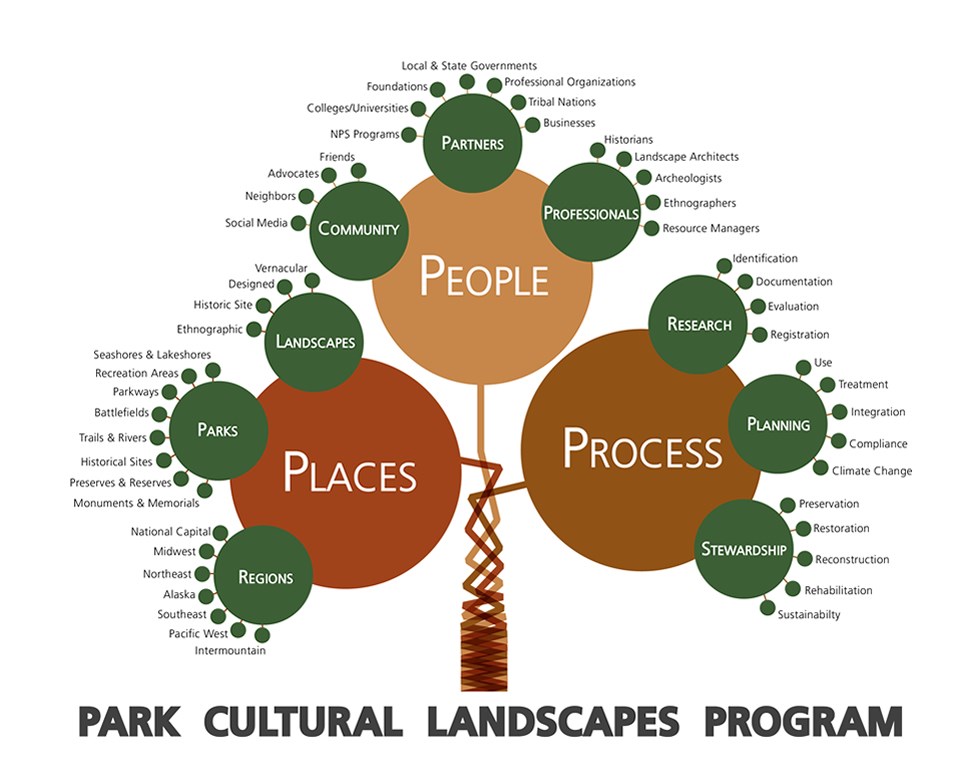What Are Cultural Landscapes?
Cultural landscapes reflect our multi-generational ties to the land, with patterns that repeat and change to remind us of the depth of our roots and the unique character of our present.They are public or private lands, large or small, that meet National Register Criteria for Evaluation for:
- historic significance (importance in the nation's history) and
- historic integrity (physical authenticity).
These places demonstrate our need to grow food, to build settlements and communities, to enjoy leisure and recreation, and to honor our deceased. Above all, these places demonstrate our continuing need to find our place within environmental and cultural surroundings. America's rich legacy is carried in its cultural landscapes; from scenic parkways to battlefields, formal gardens to cattle ranches, cemeteries to village squares, and pilgrimage routes to industrial areas.
The NPS Park Cultural Landscapes Program serves to develop, implement, and oversee an nationwide program of cultural landscape documentation and preservation in national park units. Staff in national parks, regional offices, partnering centers, and the service's Washington, D.C. office fill a spectrum of roles that together focus on furthering the preservation mission.
Click on the branches to explore this model:

Last updated: July 9, 2021
